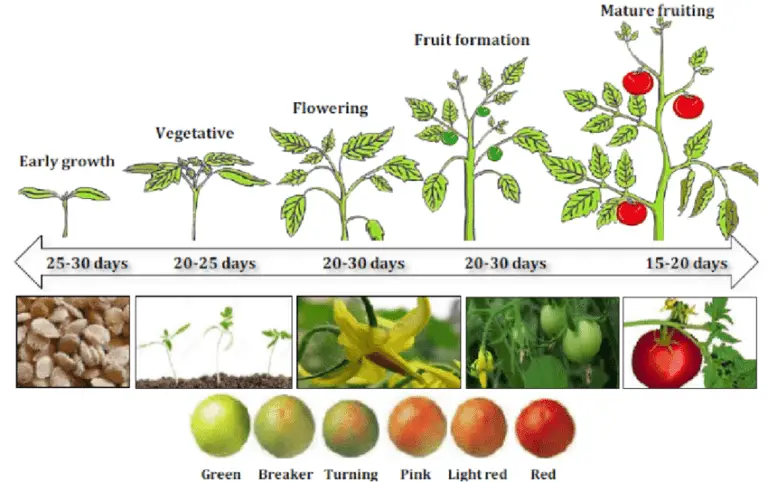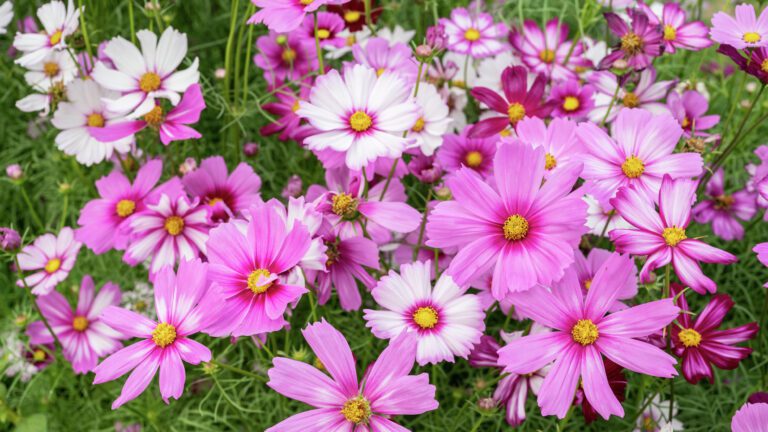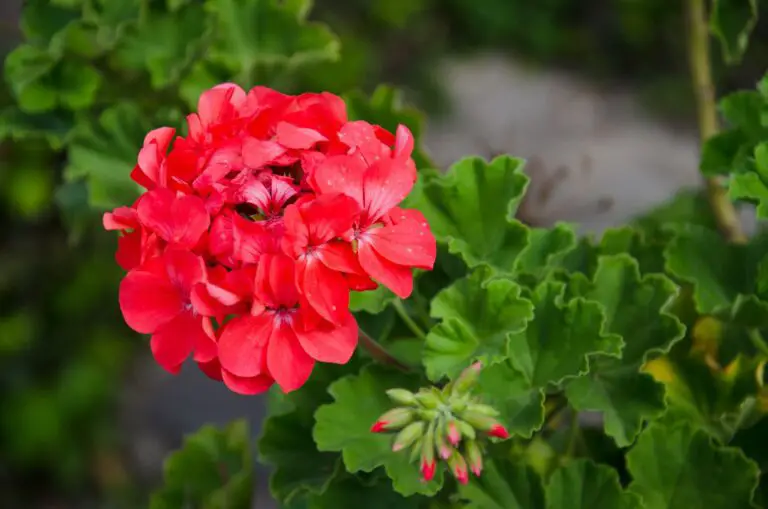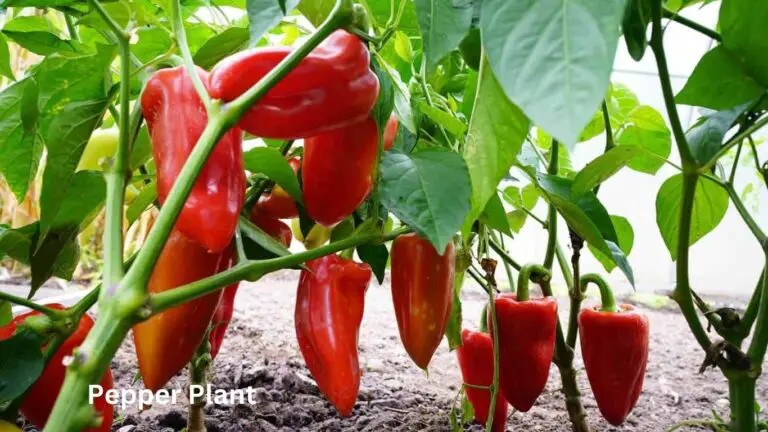The Best Growing Alpine Strawberries All Summer Long
Table of Contents
The Fascinating World of Alpine Strawberries
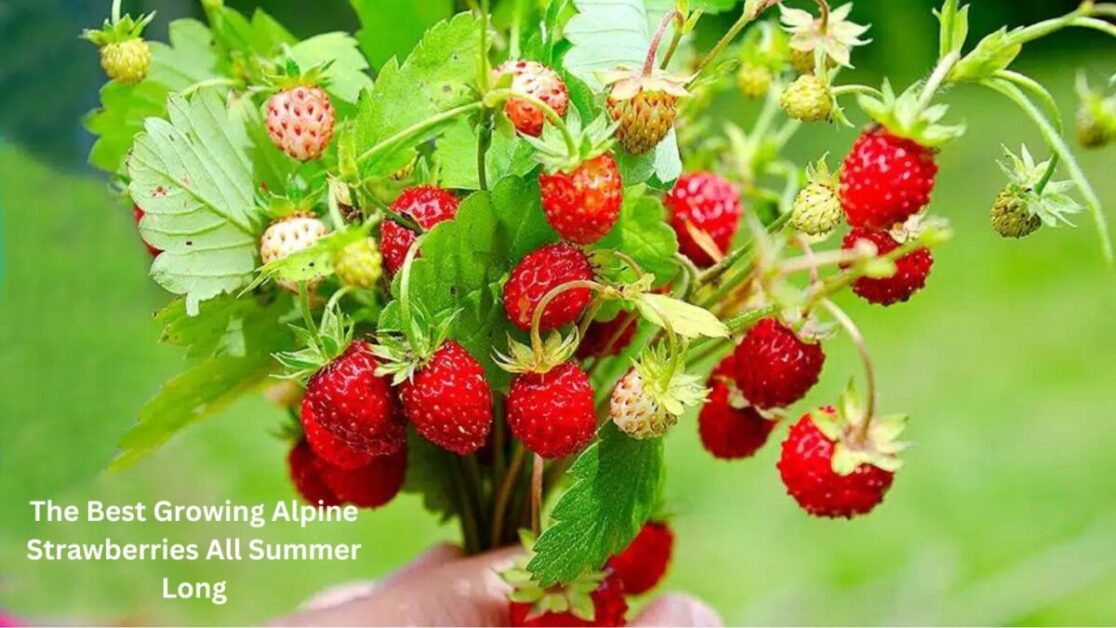
Alpine strawberries, scientifically known as Fragaria vesca, are a fascinating addition to any garden. Despite their petite size, these tiny berries pack a punch in terms of flavor and nutritional value. These perennial plants are native to mountainous regions and have been enjoyed for centuries, with records of cultivation dating back to the Roman Empire.
What sets alpine strawberries apart is their unique growth habit. Unlike the sprawling nature of traditional strawberry plants, alpine strawberries form compact clumps, making them an excellent choice for small gardens or containers. The delicate white flowers that adorn the plants in spring give way to mouthwatering berries that range in color from deep red to vibrant yellow. The flavor of alpine strawberries can be described as a delightful blend of sweetness and tartness, reminiscent of wild strawberries.
The allure of alpine strawberries lies not only in their delectable taste but also in their excellent nutritional profile. Packed with vitamins C, A, and E, as well as antioxidants and other beneficial compounds, these berries offer a healthy boost to your diet. Moreover, alpine strawberries are relatively low in calories, making them a guilt-free indulgence. Whether eaten fresh, added to salads, or used in various culinary creations, these berries are a delightful treat that will surely leave you craving more. Stay tuned to uncover the secrets of growing and caring for these remarkable gems of the garden.
Selecting the Perfect Variety of Alpine Strawberries for Your Garden
When selecting the perfect variety of alpine strawberries for your garden, it is important to consider several factors to ensure successful growth and a bountiful harvest. One crucial aspect to keep in mind is the climate and growing conditions specific to your region. Alpine strawberries are known for their adaptability and resilience, with certain varieties thriving in cooler climates, while others are better suited for warmer areas.
Another factor to consider is the size and flavor profile of the strawberries. Alpine strawberries come in a range of sizes, from small and dainty fruits to larger, more robust varieties. The taste can also vary, with some varieties offering a sweet and juicy flavor, while others have a slightly tart or tangy profile. It is worth exploring different options to find the variety that best suits your taste preferences.
Additionally, it is essential to consider the purpose of growing alpine strawberries in your garden. Are you looking for strawberries that are ideal for fresh eating, or are you interested in using them for jams, jellies, or other culinary creations? Some varieties are specifically bred for fresh consumption, while others are prized for their exceptional taste when transformed into preserves or desserts.
By carefully considering these factors, you can select the perfect variety of alpine strawberries that will thrive in your garden and provide you with the delicious and satisfying fruits you desire.
Essential Soil Requirements for Growing Alpine Strawberries
When it comes to growing alpine strawberries, selecting the right soil is crucial for their success and productivity. These delicate, flavorful berries thrive in well-drained, loamy soil with a slightly acidic pH level between 5.5 and 6.5. The soil should be rich in organic matter, providing the necessary nutrients for the plants to flourish.
To create the ideal soil conditions, consider incorporating compost or well-rotted manure into the top few inches of the soil before planting. This will help improve drainage and increase the soil’s fertility. Additionally, adding organic matter will enhance the soil’s ability to retain moisture without becoming waterlogged, which is especially important for alpine strawberries as they are prone to root rot in constantly damp soil. It is also recommended to conduct a soil test prior to planting to ensure that the pH level and nutrient composition are optimal for these delicate berries.
Understanding the Optimal Sunlight and Temperature Conditions
Alpine strawberries thrive in specific environmental conditions, making it crucial for gardeners to understand the optimal sunlight and temperature requirements for these delicate plants. In terms of sunlight, alpine strawberries require a generous amount of direct sunlight to flourish. Experts suggest providing at least six to eight hours of sunlight per day, though more is preferable if possible. This ensures that the plants receive sufficient energy for photosynthesis and healthy growth.
When it comes to temperature, alpine strawberries prefer cool climates and can tolerate temperatures as low as 20°F (-6°C) during the dormant period. However, during the growing season, temperatures between 60°F (15°C) and 75°F (24°C) are considered ideal for their development. These moderate temperatures provide the necessary warmth for vigorous flowering and fruiting, without subjecting the plants to extreme heat stress.
Maintaining the optimal sunlight and temperature conditions for alpine strawberries is crucial for their success in your garden. By providing ample sunlight and ensuring the appropriate temperature range, gardeners can foster healthy growth and maximize their strawberry harvests.
Best Practices for Planting Alpine Strawberry Seeds
Planting alpine strawberry seeds requires careful consideration and adherence to best practices to ensure successful growth and abundant harvest. Before planting, it is crucial to select high-quality seeds from a reputable supplier that specializes in alpine strawberry varieties. Opt for seeds that have been tested for germination rates and have a high success rate in diverse growing conditions.
To begin the planting process, prepare a well-draining soil mixture that is rich in organic matter. Alpine strawberries thrive in slightly acidic soil with a pH range of 5.5 to 6.5. A soil test can help determine the pH level and make any necessary amendments. It is essential to loosen the soil to a depth of at least 8 inches to provide the seeds with ample space to establish their roots.
Next, sow the seeds evenly on the prepared soil surface, aiming for a spacing of about 1 inch between each seed. Lightly cover the seeds with a thin layer of soil, ensuring they are not buried too deep. Proper seed depth allows for optimal germination and emergence. Gently water the soil, keeping it consistently moist but avoiding overwatering, as it can lead to rotting or fungal diseases. Maintain a temperature of around 65 to 75°F (18 to 24°C) during seed germination, which typically takes 2 to 4 weeks.
As the seedlings emerge, provide them with sufficient sunlight, aiming for at least 6 to 8 hours of direct sunlight each day. In regions with intense heat, some partial shade during the hottest parts of the day can help prevent stress on the young plants. Regularly monitor the soil moisture levels, ensuring it remains consistently moist but not waterlogged. Mulching can be beneficial in retaining moisture and suppressing weed growth.
By following these best practices for planting alpine strawberry seeds, you are setting the stage for healthy seedlings and a bountiful harvest. With appropriate care and maintenance, these flavorful and nutritious berries will soon grace your garden, providing you with a delightful addition to your culinary endeavors.
Propagating Alpine Strawberries from Runners
Strawberries are undoubtedly a favorite amongst gardeners due to their delectable taste and versatility. Alpine strawberries, in particular, have gained popularity for their unique flavor and ability to propagate easily through runners. Propagating strawberries from runners is an efficient and cost-effective way to expand your strawberry patch and share the joy of these delightful fruits with friends and family.
When propagating alpine strawberries from runners, it’s important to wait until the mother plant has developed strong and healthy runners. These runners, also known as stolons, are long, thin stems that grow horizontally above the ground, forming new plants at their nodes. To propagate, gently guide the runner to an area of bare soil or a container filled with moist potting mix. Press the nodes lightly into the soil, ensuring they make contact and have the right conditions to take root. By allowing the runner to establish itself and develop its own roots, you are essentially creating a new, independent strawberry plant ready to contribute to future harvests.
Watering Techniques for Thriving Alpine Strawberries
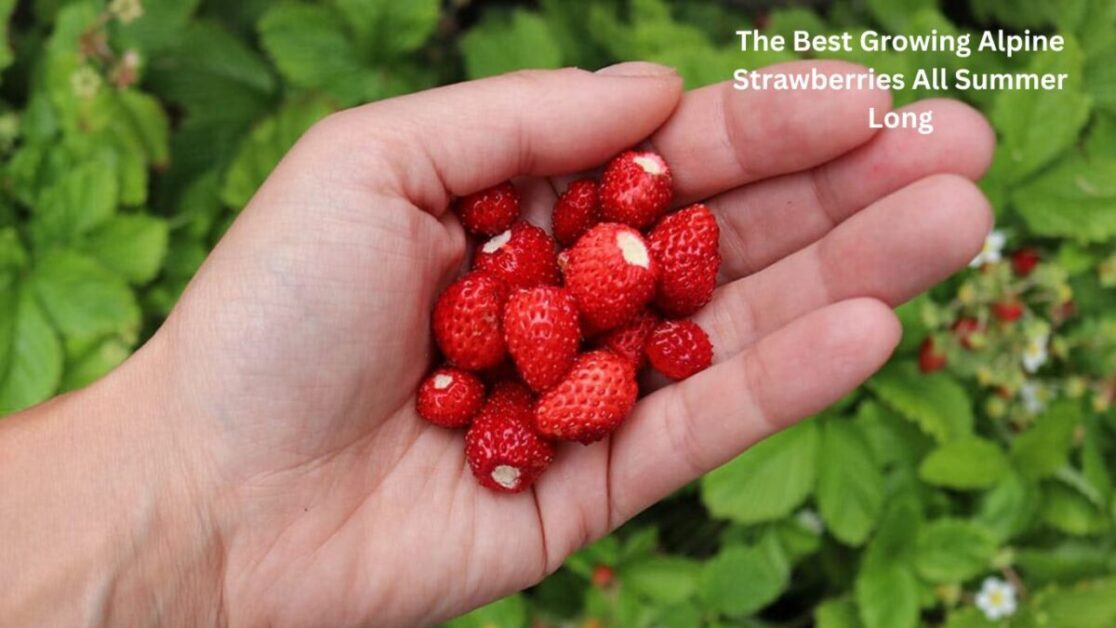
Proper watering techniques are essential for the health and productivity of your alpine strawberry plants. These delicate berries thrive when provided with the right amount of moisture, striking a balance between drought stress and excess water saturation. To ensure optimal growth and fruiting, it is crucial to follow these guidelines.
Firstly, it is important to note that alpine strawberries prefer moist soil but are highly susceptible to root rot if overwatered. To strike the right balance, water your plants regularly but avoid over-saturating the soil. Keep in mind that consistent moisture is key, so aim for a watering schedule that keeps the soil evenly moist without becoming waterlogged.
One effective strategy is to water deeply, allowing the water to penetrate the soil and reach the root zone. This encourages the roots to develop deep, strong systems, which in turn promotes healthier plants. In contrast, shallow and frequent watering can result in a shallow root system, making plants more vulnerable to stress and diseases.
Fertilizing Tips to Maximize Strawberry Yield
To maximize the yield of your alpine strawberries, proper fertilization is key. These small but mighty plants require a balanced and nutrient-rich diet to thrive and produce an abundance of juicy berries. Here are some expert tips to help you fertilize your alpine strawberries for optimal growth and yield.
First and foremost, it’s crucial to perform a soil test before applying any fertilizers. This will provide you with valuable insights on the nutrient deficiencies or excesses in your soil and guide you in selecting the right fertilizers. Most alpine strawberries prefer a slightly acidic soil with a pH range between 5.5 and 6.5. Additionally, they require a well-draining soil to prevent root rot and other moisture-related issues.
When it comes to fertilizer selection, opt for a balanced organic fertilizer with equal ratios of nitrogen (N), phosphorus (P), and potassium (K). These three macronutrients are essential for the overall health and productivity of your alpine strawberries. Ideally, choose a slow-release fertilizer that will provide a steady supply of nutrients over time, promoting consistent growth and fruit development. Remember to follow the manufacturer’s instructions for application rates, as over-fertilizing can harm your plants and lead to nutrient imbalances.
Protecting Your Alpine Strawberries from Pests and Diseases
Preventing Pests and Diseases
To protect your alpine strawberries from potential pests and diseases, it’s crucial to maintain a proactive approach and implement preventive measures. One effective method is to regularly inspect your plants for any signs of insect infestation or disease symptoms. Look for pests such as aphids, slugs, or spider mites, as well as indicators of fungal infections or viral diseases.
Additionally, creating a physical barrier around your plants, such as using netting or row covers, can provide an extra layer of defense against common pests. This will help to prevent them from accessing your strawberry plants and laying their eggs. Furthermore, proper spacing between plants and good air circulation can assist in reducing the likelihood of fungal infections, as adequate airflow can minimize damp conditions that are conducive to mold and mildew growth.
By incorporating these preventive measures into your routine garden care, you can significantly reduce the risk of pests and diseases impacting the health and yield of your cherished alpine strawberries. Remember, a proactive approach combined with careful monitoring is key to maintaining the vitality of your plants.
Pruning and Training Methods for Healthy Strawberry Plants
Pruning and training are essential practices in maintaining the health and productivity of your alpine strawberry plants. By implementing proper techniques, you can promote optimal growth, minimize diseases, and maximize fruit production.
When it comes to pruning alpine strawberries, it is crucial to remove dead or damaged foliage and runners regularly. This helps to maintain adequate airflow and prevent the spread of diseases. Additionally, removing excess vegetation allows the plant to focus its energy on producing high-quality fruits. To prune your alpine strawberries, simply use clean and sharp pruning shears to cut off any unwanted or unhealthy parts of the plant.
Training your alpine strawberries involves directing the growth of the plants to ensure they remain compact and well-organized. One effective technique is to use a trellis system or stakes to support the runners and keep them off the ground. This not only prevents the fruit from touching the soil, reducing the risk of rot and pests, but also facilitates easier access for harvesting. Ensuring that the runners are spaced evenly and secured to the trellis or stakes encourages a neat and controlled growth pattern.
Managing Weeds in Your Alpine Strawberry Patch
Weeds can quickly take over your alpine strawberry patch if left unchecked, competing for valuable nutrients and sunlight. To ensure the health and productivity of your strawberry plants, it is important to manage weeds effectively. The first step is to prevent weeds from germinating by applying a thick layer of organic mulch around your plants. This will help smother any existing weed seeds and prevent new ones from taking hold. Mulching also helps to retain moisture in the soil, reducing the need for frequent watering.
In addition to mulching, regular weeding is essential to keep your alpine strawberry patch weed-free. When weeding, be sure to remove weeds by their roots to prevent regrowth. Be mindful not to disturb the shallow roots of your strawberry plants in the process. Hand weeding is the most effective method as it allows you to target specific weeds and minimize damage to your strawberries. For larger patches, you may consider using a hoe or a hand cultivator to expedite the process. Remember to weed regularly to prevent weed competition and ensure the optimal growth of your alpine strawberries.
Harvesting Alpine Strawberries at Peak Ripeness
To ensure the utmost flavor and sweetness, harvesting alpine strawberries at peak ripeness is crucial. These petite, delectable berries are a delight to grow and savor, but timing is everything when it comes to collecting them from your garden. Determining the ideal moment for picking requires attentiveness, as these strawberries have a shorter shelf life compared to their larger counterparts. It is important to monitor their progress closely and harvest them at just the right time to fully enjoy their tantalizing flavors.
When alpine strawberries reach their peak ripeness, their color transitions from a pale green to a vibrant red, indicating their readiness for picking. Gently tug on the strawberries and if they detach easily from the stem without resistance, it’s a clear sign that they are perfectly ripe. Additionally, their aroma should be lusciously fragrant, signaling a burst of flavor and sweetness. Keep in mind that alpine strawberries have a shorter shelf life compared to other varieties, so it is best to harvest them as needed, ensuring each berry is plump, juicy, and at the peak of its flavor.
Storing and Preserving Alpine Strawberries for Extended Use
Storing and preserving alpine strawberries for extended use is a crucial step in maximizing the enjoyment of these delectable fruits throughout the year. By employing the right techniques, you can ensure that your harvest remains fresh and flavorful, even during the colder months when strawberries are scarce. Here, we will explore some effective methods for storing and preserving alpine strawberries, allowing you to savor their sweetness long after the growing season has ended.
One popular approach to preserving alpine strawberries is freezing. Freezing strawberries not only helps retain their vibrant color and juicy texture but also locks in their delightful aroma. To freeze alpine strawberries, start by washing the fruits gently in cold water and patting them dry. Remove the leafy green caps and either leave the strawberries whole or slice them to your desired thickness.
Arrange the strawberries in a single layer on a baking sheet lined with parchment paper and place them in the freezer. Once the strawberries are frozen solid, transfer them into airtight containers or freezer bags, removing as much air as possible to prevent freezer burn. Label and date the containers, and store them in the freezer for up to six months.
Overwintering Alpine Strawberries for Next Year’s Harvest
Overwintering Alpine Strawberries is a crucial step in ensuring a bountiful harvest for the following year. These delicate plants require proper protection during the winter months to survive and thrive. Here are some expert tips on how to successfully overwinter your alpine strawberries and ensure their health and productivity.
Firstly, it is important to prepare your plants for the dormant period ahead. As temperatures start to drop, carefully remove any dead or diseased foliage from the plants. This will help prevent the spread of diseases and pests that could harm your strawberries during the winter. Additionally, ensure that the soil around the plants is free from weeds and debris, as these can harbor pests and diseases as well.
Once your alpine strawberries are properly pruned and the area is cleaned, it’s time to provide them with the protective cover they need. One effective method is to use a layer of straw or mulch to insulate the plants and regulate soil temperature. This will not only help retain moisture but also shield the plants from extreme cold and frost. Make sure to spread an even layer of straw or mulch around the plants, avoiding direct contact with the crowns to prevent rotting. Ideally, the layer should be around 2-3 inches thick to provide adequate insulation.
By following these overwintering practices, you can give your alpine strawberries the best chance of survival and set the stage for a successful harvest in the coming year. Remember to monitor the plants periodically during the winter and take necessary action if any issues arise. With proper care and attention, you will be rewarded with healthy and vibrant alpine strawberries that will delight your taste buds and enhance your garden’s beauty.
Troubleshooting Common Issues in Growing Alpine Strawberries
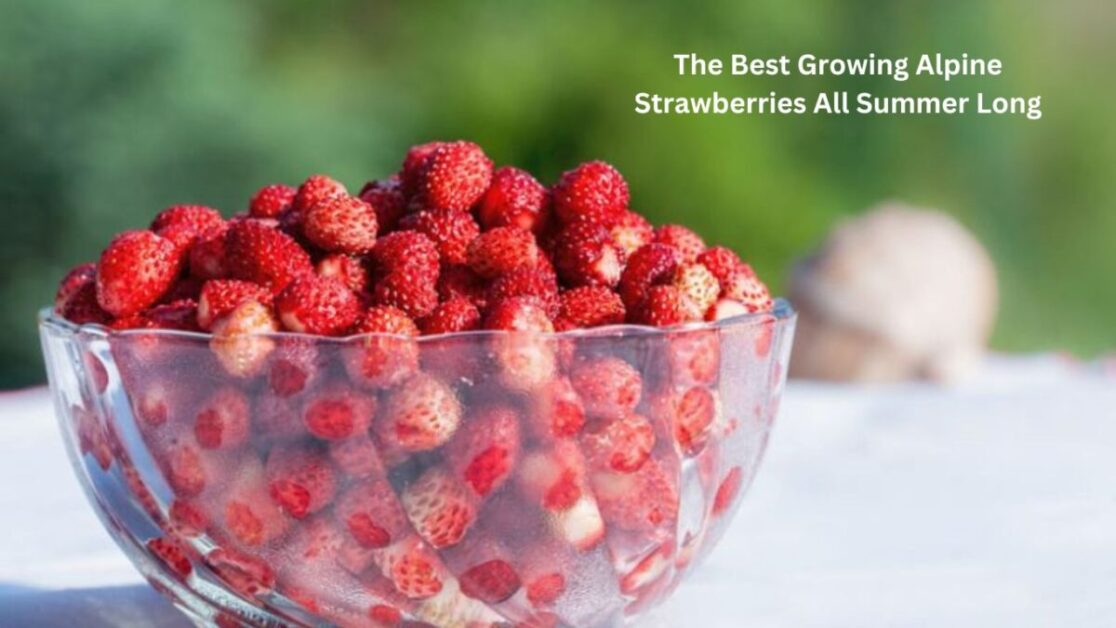
One common issue that gardeners may encounter when growing alpine strawberries is poor fruit production. If your plants are not producing a satisfactory yield, there are several factors to consider. Firstly, ensure that your plants have adequate sunlight exposure. Alpine strawberries thrive in full sun, so if they are not receiving at least 6-8 hours of direct sunlight per day, it could be affecting their fruiting capabilities. Additionally, improper soil conditions may be hindering fruit production. Alpine strawberries prefer well-draining soil with a pH level between 6.0 and 6.8. Conduct a soil test to determine if any amendments, such as organic matter or lime, are needed to create the ideal growing environment for your plants.
Another issue that may arise is the presence of pests or diseases in your alpine strawberry patch. Common pests that can feast on your plants’ leaves, hinder fruit development, and weaken overall plant health include aphids, slugs, and spider mites. Regularly inspect your plants for any signs of infestation, such as holes in leaves or visible pests. Introducing natural predators, like ladybugs or lacewings, can help control aphid populations. For slugs, setting up beer traps or using copper tape around the perimeter of your garden can deter them. If spider mites are present, a strong spray of water or introducing predatory mites can help manage their numbers.
Additionally, practicing good garden hygiene, such as removing any diseased or damaged plant material, can minimize the risk of diseases like gray mold or leaf spot. If necessary, consult with your local extension office or a knowledgeable horticulturist for specific treatment options for any pests or diseases affecting your alpine strawberries.
Here’s a table outlining the key considerations for successfully growing Alpine strawberries all summer long:
| Aspect | Details |
|---|---|
| Variety Selection | Choose suitable Alpine strawberry varieties such as ‘Mignonette’ or ‘Ruegen’ that are known for their flavor and continuous fruiting throughout the summer. |
| Location | Select a location that receives full sun to partial shade, ensuring at least 6-8 hours of sunlight per day. Consider planting in a spot with well-draining soil to prevent waterlogging. |
| Soil Preparation | Prepare the soil by incorporating organic matter like compost to improve fertility and drainage. Alpine strawberries prefer slightly acidic soil with a pH between 5.5 and 6.5. |
| Planting Time | Plant Alpine strawberry runners or seedlings in early spring after the last frost date, giving them time to establish before the heat of summer. |
| Spacing | Space Alpine strawberry plants about 12-18 inches apart in rows or clusters to allow for proper airflow and room for growth. |
| Watering | Water consistently to keep the soil evenly moist, especially during dry periods. Avoid overwatering to prevent root rot. Mulch around plants to retain moisture and suppress weeds. |
| Fertilization | Fertilize sparingly with a balanced fertilizer or compost tea every 4-6 weeks during the growing season to provide necessary nutrients. Avoid over-fertilizing, which can lead to excessive foliage growth at the expense of fruit production. |
| Pruning | Remove runners and old, spent leaves regularly to promote airflow and prevent overcrowding. Trim back excessive foliage to encourage more fruit production. |
| Pest and Disease Control | Monitor plants regularly for pests such as slugs, snails, and aphids. Use organic pest control methods like handpicking or applying diatomaceous earth. Keep the area clean to minimize disease pressure, and promptly remove any diseased or damaged foliage. |
| Harvesting | Harvest ripe Alpine strawberries as they become available throughout the summer. Pick berries when fully red and ripe, avoiding overly soft or mushy ones. Harvest regularly to encourage continuous fruiting. |
| Season Extension | Consider using row covers or shade cloth to protect plants from extreme heat or sunburn during the hottest days of summer. Provide supplemental irrigation during dry spells to ensure consistent moisture levels. |
By following these guidelines, you can maximize the yield and quality of Alpine strawberries throughout the summer months, enjoying a bountiful harvest of delicious, flavorful berries.
Inspiring Recipes and Creative Uses for Alpine Strawberries
Alpine strawberries are not only a delight to grow, but they also offer a wealth of possibilities in the kitchen. Their vibrant red color and sweet-tart flavor make them a versatile ingredient that can elevate both sweet and savory dishes. One popular recipe is the classic strawberry shortcake, where sliced alpine strawberries are nestled between layers of fluffy cake and topped with whipped cream. The strawberries not only add a burst of freshness but also complement the richness of the cream perfectly.
For those looking for a more unexpected use of alpine strawberries, try incorporating them into a salad. Their juicy texture and tangy taste bring a refreshing twist to a variety of greens. Combine them with baby spinach, crumbled feta cheese, candied walnuts, and a light balsamic vinaigrette for a salad that is both visually appealing and bursting with flavor. The sweetness of the strawberries balances the acidity of the dressing, creating a harmonious blend of tastes. Experiment with different combinations of ingredients to find your own signature alpine strawberry salad creation.
What are alpine strawberries?
Alpine strawberries are a unique variety of strawberries that are smaller in size but packed with flavor. They are known for their sweet and tangy taste, making them a popular choice for culinary uses.
Can I grow alpine strawberries in my garden?
Absolutely! Alpine strawberries are relatively easy to grow and can be a great addition to any garden. With the right soil conditions and care, you can enjoy a bountiful harvest of these delicious berries.
What is the optimal sunlight and temperature conditions for growing alpine strawberries?
Alpine strawberries thrive in full sun or partial shade, and they prefer temperatures between 60°F and 75°F (15°C and 24°C). It is important to provide them with the right amount of sunlight and protect them from extreme temperatures.
How do I propagate alpine strawberries from runners?
To propagate alpine strawberries from runners, you can carefully transplant the rooted runners into new pots or directly into the soil. This allows the plants to spread and produce more strawberries.
How often should I water alpine strawberries?
Alpine strawberries require regular watering to keep the soil consistently moist. Water them deeply once or twice a week, depending on the weather conditions. Avoid overwatering, as it can lead to root rot.
What pests and diseases should I be aware of when growing alpine strawberries?
Some common pests that can affect alpine strawberries include slugs, snails, aphids, and spider mites. Diseases such as powdery mildew and gray mold can also be a concern. Implementing proper pest control measures and maintaining good hygiene in the garden can help prevent these issues.
How do I harvest alpine strawberries at peak ripeness?
Alpine strawberries are best harvested when they are fully ripe. They should be bright red and easily detach from the stem when gently pulled. Be careful not to bruise or damage the delicate berries during harvest.
What are some creative uses for alpine strawberries?
Alpine strawberries can be used in a variety of delicious ways. They are perfect for fresh eating, adding a burst of flavor to salads, desserts, and beverages. They can also be used to make jams, jellies, and fruit compotes.
How can I store and preserve alpine strawberries for extended use?
To store alpine strawberries, place them in a single layer on a baking sheet and freeze them. Once frozen, transfer them to an airtight container or freezer bag. They can be kept frozen for up to six months and used in smoothies, sauces, or baked goods.
How can I overwinter alpine strawberries for next year’s harvest?
In colder regions, you can protect your alpine strawberry plants during winter by covering them with a layer of mulch or straw. This helps insulate the plants and prevent cold damage. Remove the mulch in early spring when the risk of frost has passed.


